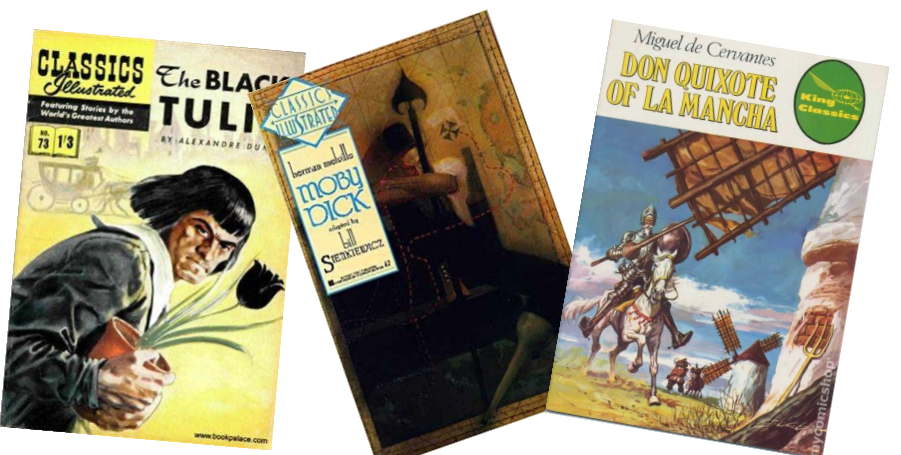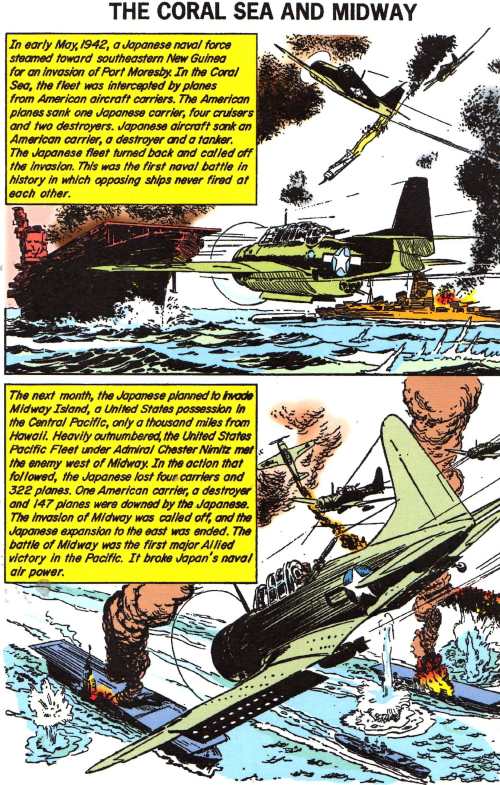Studying the Classics, Graphic Novel Style

The idea of adapting a classic novel or short story to the comics medium has been around for a long time. I remember, as a child, picking out ten dollars worth (I forget how many that bought) of King Classics comics, selected mostly on the basis of which covers best grabbed my attention, at a drug store in Florida. These books were published in 1977, and they were my first exposure to Gulliver’s Travels, Moby Dick, Robin Hood, and many others.
Though I went on to read the “real” versions of some of these books, with the vast majority I did not (though I did graduate to the Great Illustrated Classics series, which featured a full-page illustration paired with a page of text). Some might point to this as counterproductive, the whole idea of “Classic Comics” ostensibly being to lead children to eventually read the novels themselves. But even a voracious reader would be hard-pressed to read the full versions of all of the classic titles now available in graphic novel format.
Though many companies have published comic book versions of the classics, perhaps the most famous and longest-lived was Classics Illustrated (originally Classic Comics) The Classic Comics titles have seen a resurgence in recent years, with high-quality, restored reprints hitting the market.
Jack Lake Productions Inc. (JLP) currently offers many titles, which include the traditional books, plus a younger children’s line, Classics Illustrated Junior (featuring The Ugly Duckling, The 3 Little Pigs, and Paul Bunyan, among others), There are also special issues focusing on historical events (The War Between the States, The Story of America) or general subjects in its “World Around Us” series (The Illustrated Story of Dogs, The Illustrated Story of the Crusades).

Most of these books hold up surprisingly well, considering the fact that they were written over half a century ago. As an example, despite many graphic novels published in the past decade focusing on World War II, or specific aspects of that conflict, the Classics Illustrated version is admirably comprehensive and still stands as a perfect introduction to the subject. Beginning with short sections titled “Blitzkrieg”, “The Fuehrer”, and “War on the High Seas”, the book condenses an incredible amount of textual and visual information into easy-to-digest chapters, resulting in a 96 page epic that is remarkable for its thoroughness and clarity—and artwork that brings history alive in a way that a high school history textbook can’t.
Jaak Jarve, President of JLP, spoke about the Canadian company’s current offerings and future publication plans:
“We plan on finishing the entire 297 title U.S. Classics Illustrated series and then start picking titles from the JES (Joint European Series) and Greek titles. In total there are over 800 Classics Illustrated affiliated international titles. All new JLP publications will be released under the Classic Comics banner, and our new product line-up will be announced in May 2017.” The new offerings will include republished titles like The Prince and the Pauper and Lorna Doone, as well as a new title, Beau Geste.
With a similar goal, Jon Brooks at the Classic Comic Store Ltd., a U.K.-based publisher of Classics Illustrated books, said, “The addition of new titles to the line [..] really keys into what our long-time, loyal collectors are looking to get out of the line – titles they’ve never had in C.I. before. To date, we’ve added two new titles—Nicholas Nickleby and The 39 Steps.” The Classic Comic Store not only publishes beautifully restored softcover and hardcover versions of Classics Illustrated comics, it also stocks a wide variety of other companies’ titles; even Marvel got into the act, first in the 1970s with Marvel Classic Comics, and then again with new adaptations in 2008, through the Marvel Illustrated line.
Aside from my personal interest in the art and storytelling choices of now-familiar and often-adapted tales, Classics Illustrated also fills a niche for me—books that I’m curious about, but wouldn’t invest the time to read in the original novel format. Alexander Dumas is known as the author of The Three Musketeers, The Man in the Iron Mask, and The Count of Monte Cristo, but how many people have read The Corsican Brothers or The Black Tulip, two of his lesser-known works? All are available as Classics Illustrated titles, along with The White Company by Arthur Conan Doyle (best known for his Sherlock Holmes mysteries), Jules Verne’s Michael Strogoff, and Herman Melville’s Typee.
Also available are James Fenimore Cooper’s The Deerslayer, The Pioneers, and The Pathfinder, along with the more-famous Last of the Mohicans, all part of his Leatherstocking Tales series. (As far as I know, The Prairie, the fifth book in the series, has never been adapted into comics form).
Other companies have introduced projects that are inspired by classic works of literature and the example of Classics Illustrated. Jim Salicrup, editor-in-chief of Papercutz, explained that while his company is still offering Classics Illustrated titles from the 1990s (originally published by First Comics) and reprinting material from European publishers, it’s also got new publications, of which two in particular are notable:
“The Children Of Captain Grant is an adaptation by Alexis Nesme of the classic, but not very widely known, tale by none other than Jules Verne. While a very serious and faithful adaptation in its own way, Nesme has changed all of the human characters into anthropomorphic characters—essentially human-like animal characters.Our hope is that older comics fans will appreciate the great writing and beautiful fully painted artwork. I can’t stress enough how beautiful this book is, especially the hardcover with its lovely endpapers.”
Having read the book, I have to agree—Nesme’s artwork is stunning, and the story entertaining as well. Salicrup went on to describe another offering—“the strangest adaptation we’ve ever published”:
“The first in a new graphic novel series of Disney Parodies, it’s called “Mickey’s Inferno.” Originally created in Italy in 1949-1950 by writer Guido Martina and artist Angelo Bioletti, we kept the story [..] but had a new script created by writer Stefan Petrucha.”
Though it’s intended as a comedic spoof and features Mickey Mouse as Dante, Goofy as Virgil, and Minnie Mouse as Beatrice, the book is written in terza rima, just like Dante’s original. A Disney Parodies version of Dracula is also planned.
It seems that in the world of graphic novels, the classics are flourishing—what’s old is new, and what’s new is old. Here’s hoping it continues.

Peter Dabbene wrote the graphic novels Ark and Robin Hood. He is a reviewer for Foreword Reviews, and his poetry and stories have been published in many literary journals, collected in the photo book Optimism, and in the story collection Glossolalia. His latest books are Spamming the Spammers and More Spamming the Spammers.
Peter Dabbene
